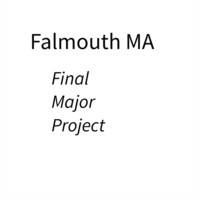 During this week we discussed the subject of a photographer response and responsibilities and at the same time I visited the Photography Show at the NEC in Birmingham. Photography is heavily influenced by my environment and the things I observe within that environment even my constructed images are based on fragments of those experiences. For example the Cats and Dogs image I created for this week’s Photography Interlude was based things that had happened in the last 6 months. The image was taken of a mother with her two daughters though the third cat from that litter no longer lives with us so the picture was incomplete as a family unit. At the same time this would be the last photography interlude that I would curate separation from something I had nurtured on another level. The method for creating that tension was informed from an image that I saw at PhotoParis. I feel it is the ability to draw on those influences that makes my photography relevant yet interesting and the photograph is a response to events.
During this week we discussed the subject of a photographer response and responsibilities and at the same time I visited the Photography Show at the NEC in Birmingham. Photography is heavily influenced by my environment and the things I observe within that environment even my constructed images are based on fragments of those experiences. For example the Cats and Dogs image I created for this week’s Photography Interlude was based things that had happened in the last 6 months. The image was taken of a mother with her two daughters though the third cat from that litter no longer lives with us so the picture was incomplete as a family unit. At the same time this would be the last photography interlude that I would curate separation from something I had nurtured on another level. The method for creating that tension was informed from an image that I saw at PhotoParis. I feel it is the ability to draw on those influences that makes my photography relevant yet interesting and the photograph is a response to events.
Looking at this weeks subject at the macro level of can photograph be an agent for change we often cite the Vietnam war as the most photographed and photographs were the agent of change for that shortened the war. Yet other conflicts were also heavily recorded such as the Korean War or the the war that is currently taking place in Syria. A search in Google will pull up pages of images from Syria yet the war still continues. Berger concluded that we had become desensitised ‘So accustomed to being addressed by these images, we scarcely notice their impact’ (Berger, 1972: 130). I am not sure that we have become desensitised to the images I think instead it is a response to the fact our world is increasingly more visual and therefore our attention span for any single image is reduced. This reduced attention span means we are no longer able to comprehend the full meaning before more our attention to the next image. For images to have impact in this visual world we either need to see a series of the same images on one of our contexts of consumption or the same image across multiple contexts. The reality of the visual world.
I visited the Photography Show again this year in previous years my sole purpose would be to look for a new piece of photographic equipment that I felt was missing in my kit bag. When your kit bag is no longer a bag but several rooms there is an argument that says you no longer need more kit after there is only one you and the photography is the person who takes responsibility for the process of image making. Though maybe there is an argument that advances in photography allow use to see The Detail (Szarkowski, 2007, p.8) of The Thing Itself that was not possible with out advances in technology. The latest flash and camera technology allow me to record an event that happens in 1/20,000 of a second something not possible a few decades earlier.

Equipment for me will always be a factor in my practice but it is not the most important part that is my artistic discernment for the images I create and how they are contextualised. This year I made more time at the show to explore and discuss contexts for seeing rather than the techniques associated with capture. I made some time to catch-up with Paul Hermann from Red-eye who provided me with some useful contacts to progress the journey of getting my work see within my target environment of the Art Market. With my portfolio in hand arrange a portfolio review wit ha member of the British Institute of Professional Photographers. The review was a useful checkpoint that allowed me to evaluate progress of both my Work in Progress for this module and the direction and intent for my larger body of work for my research project ‘Tilbury to Harwich’.
References:
- Berger, J., 1972, ‘Ways of Seeing’, London, Penguin
- Sarkowski, J., 2007 ‘ The Photographer’s Eye, New York, Museum of Modern Art



Pingback: I am Me – Part 3